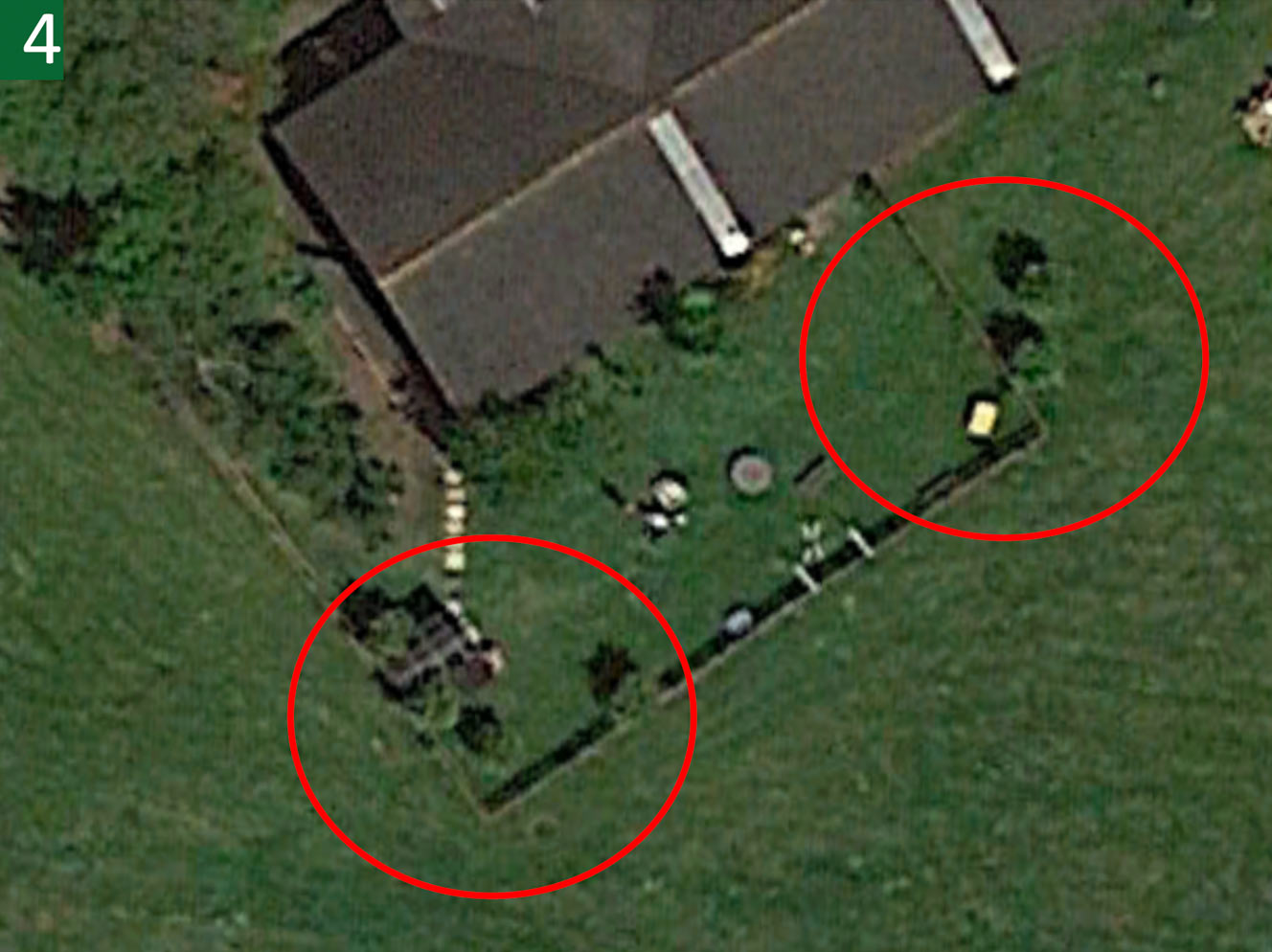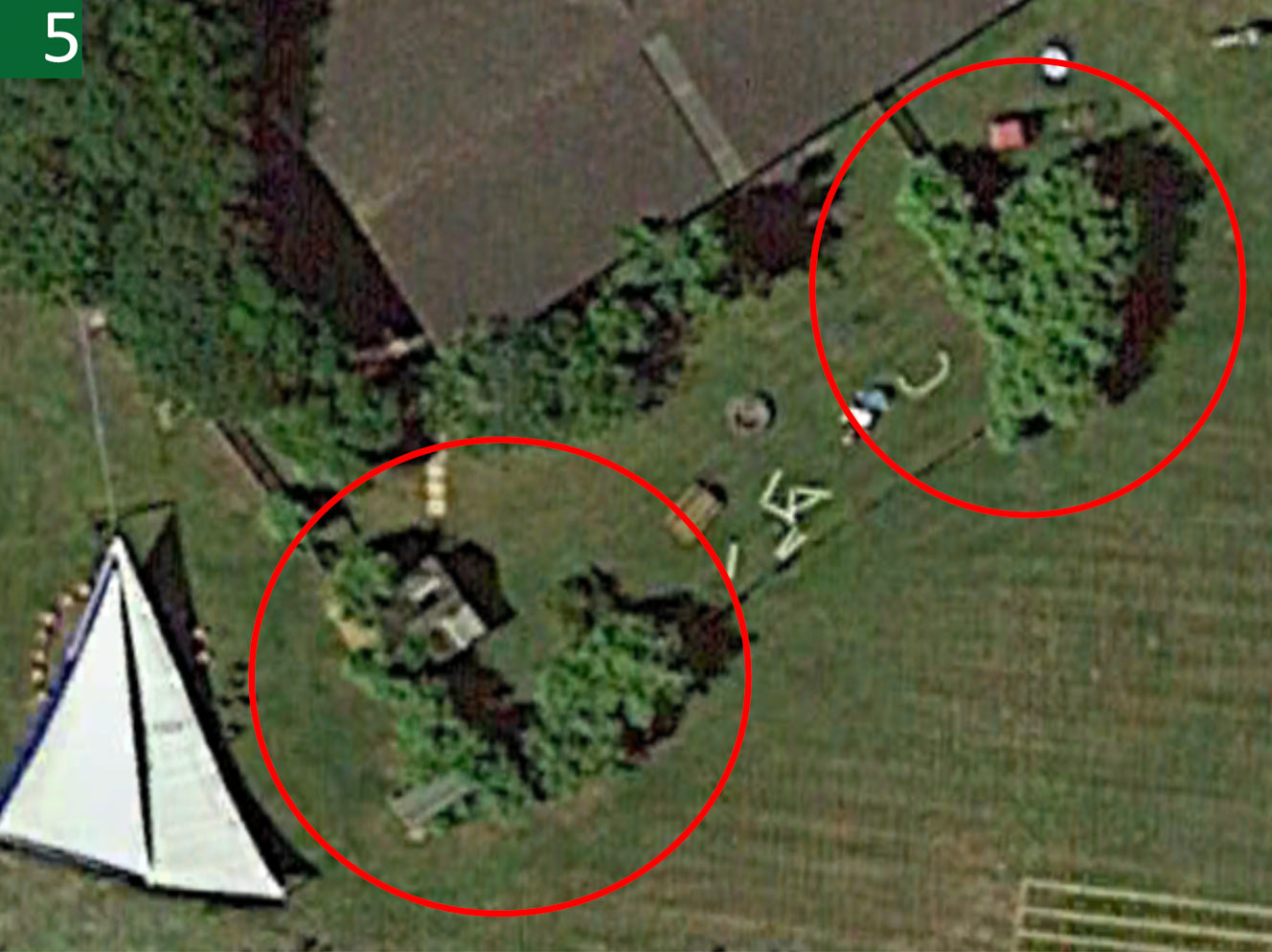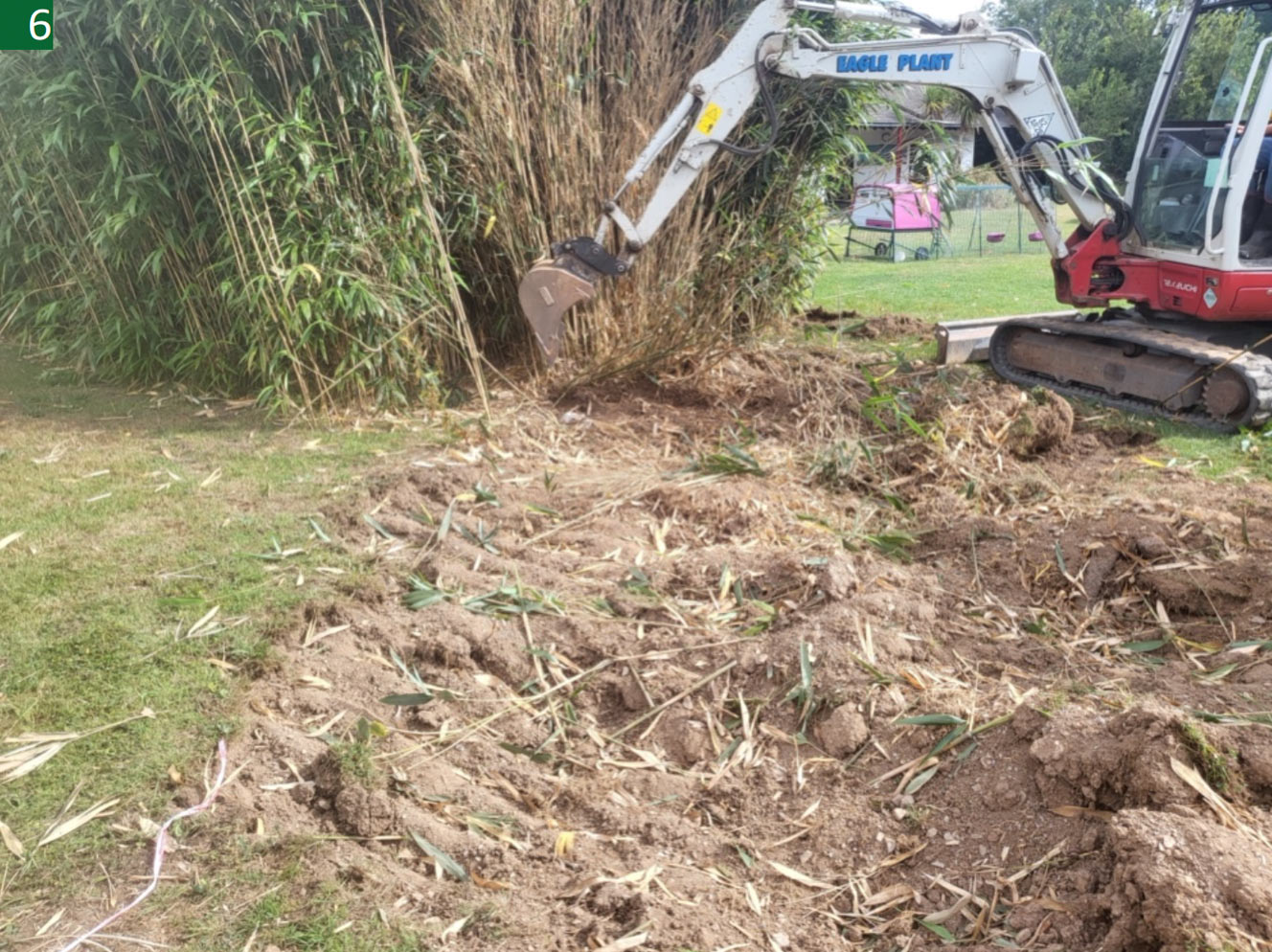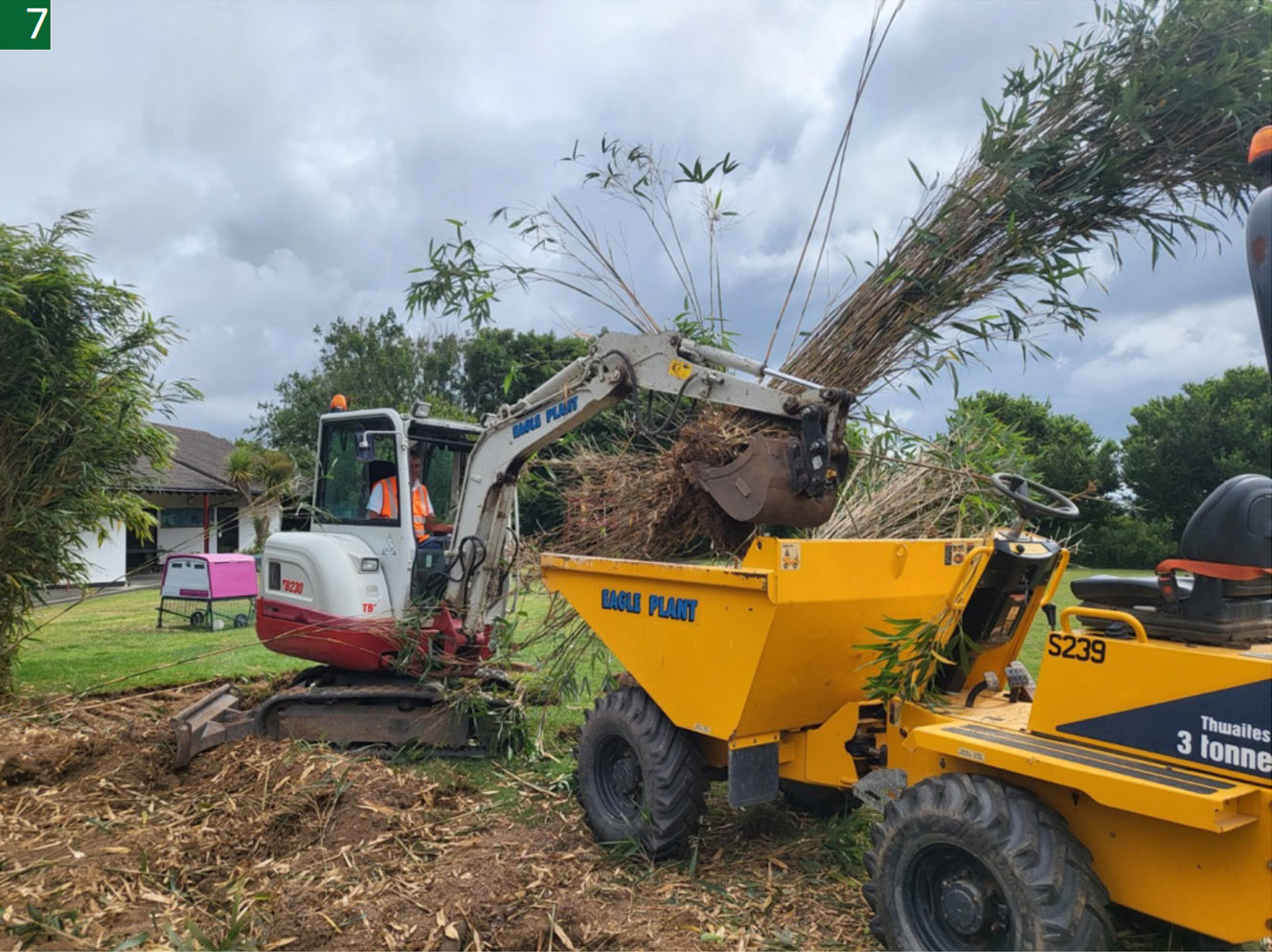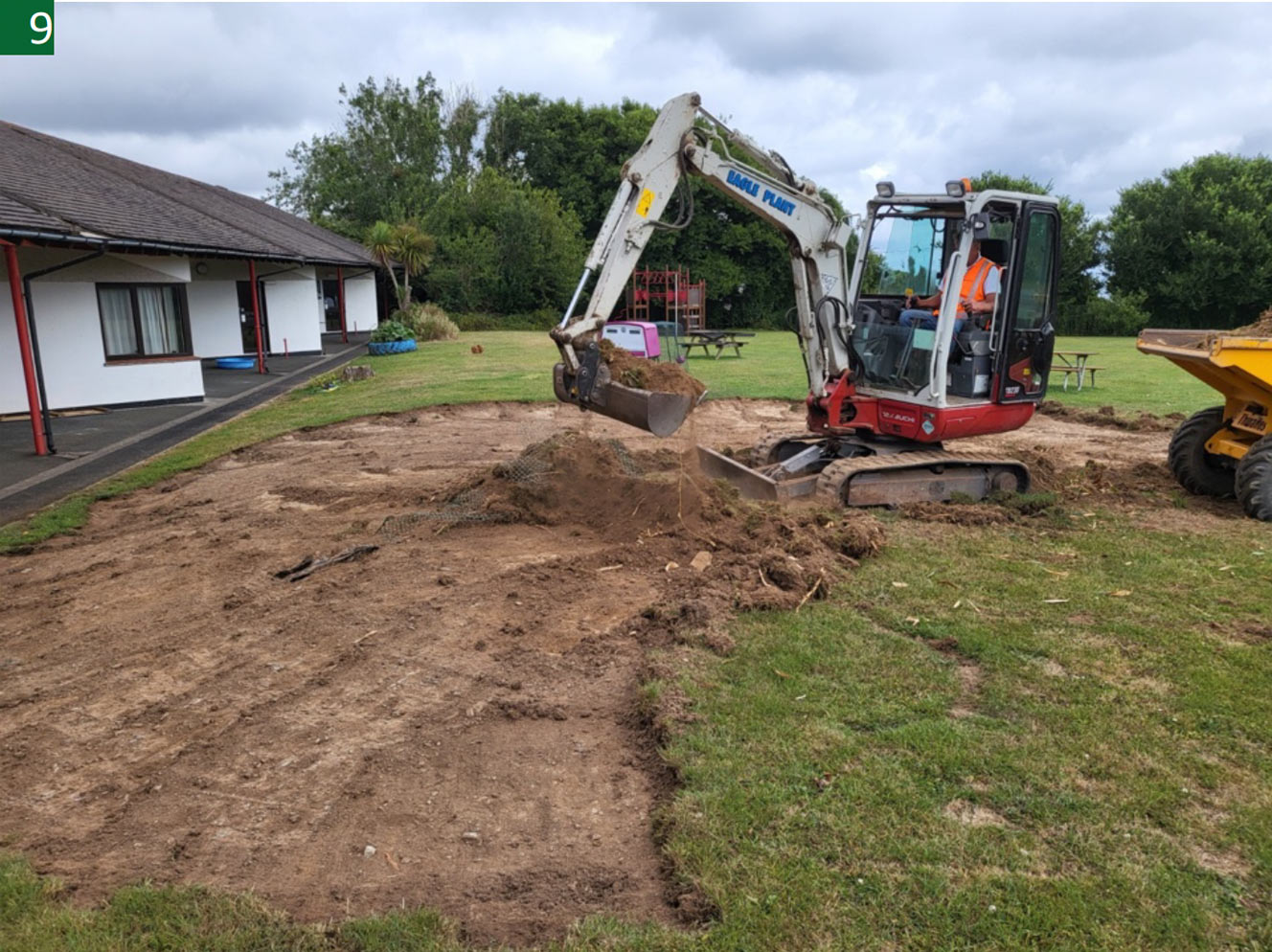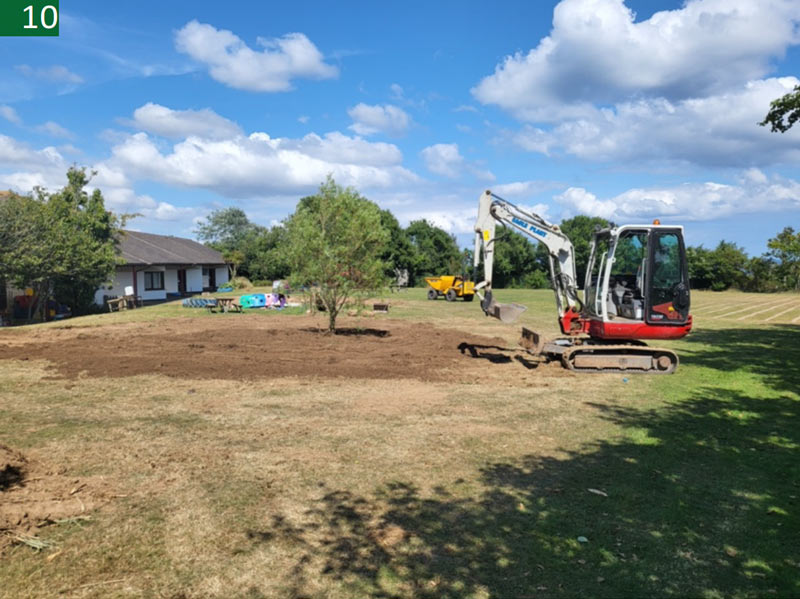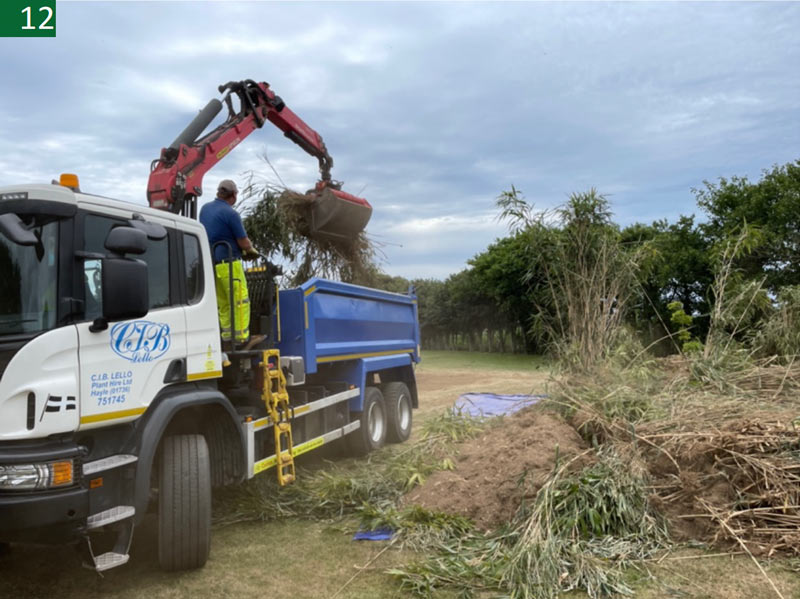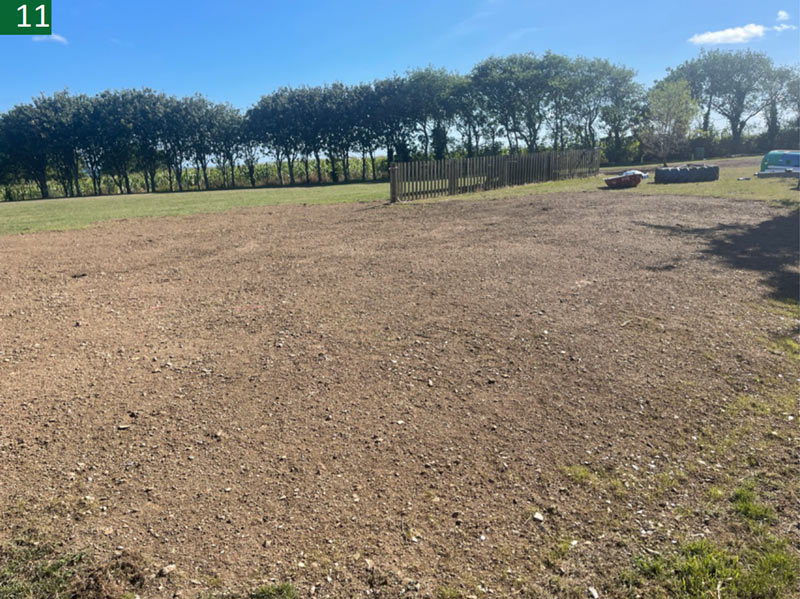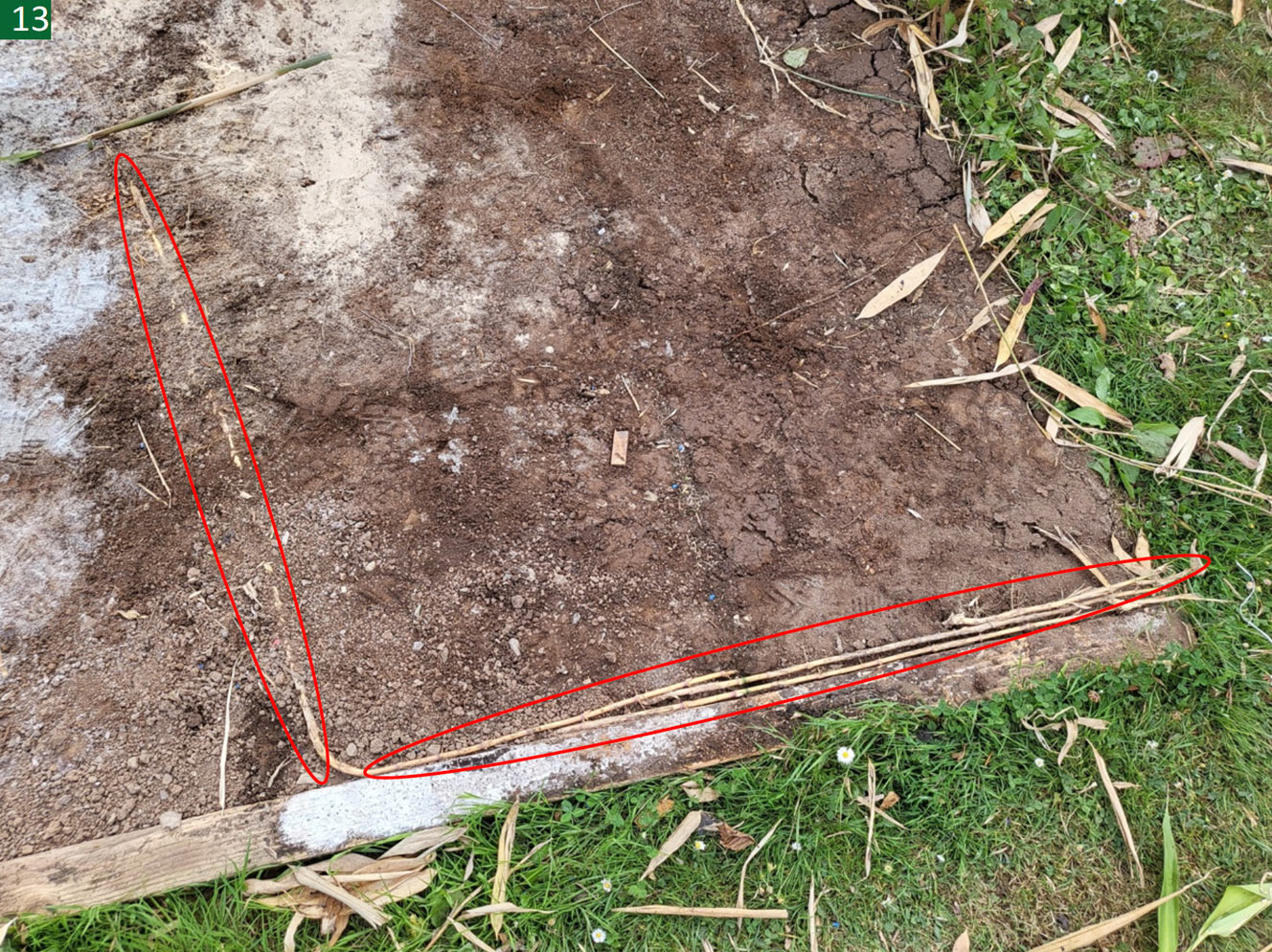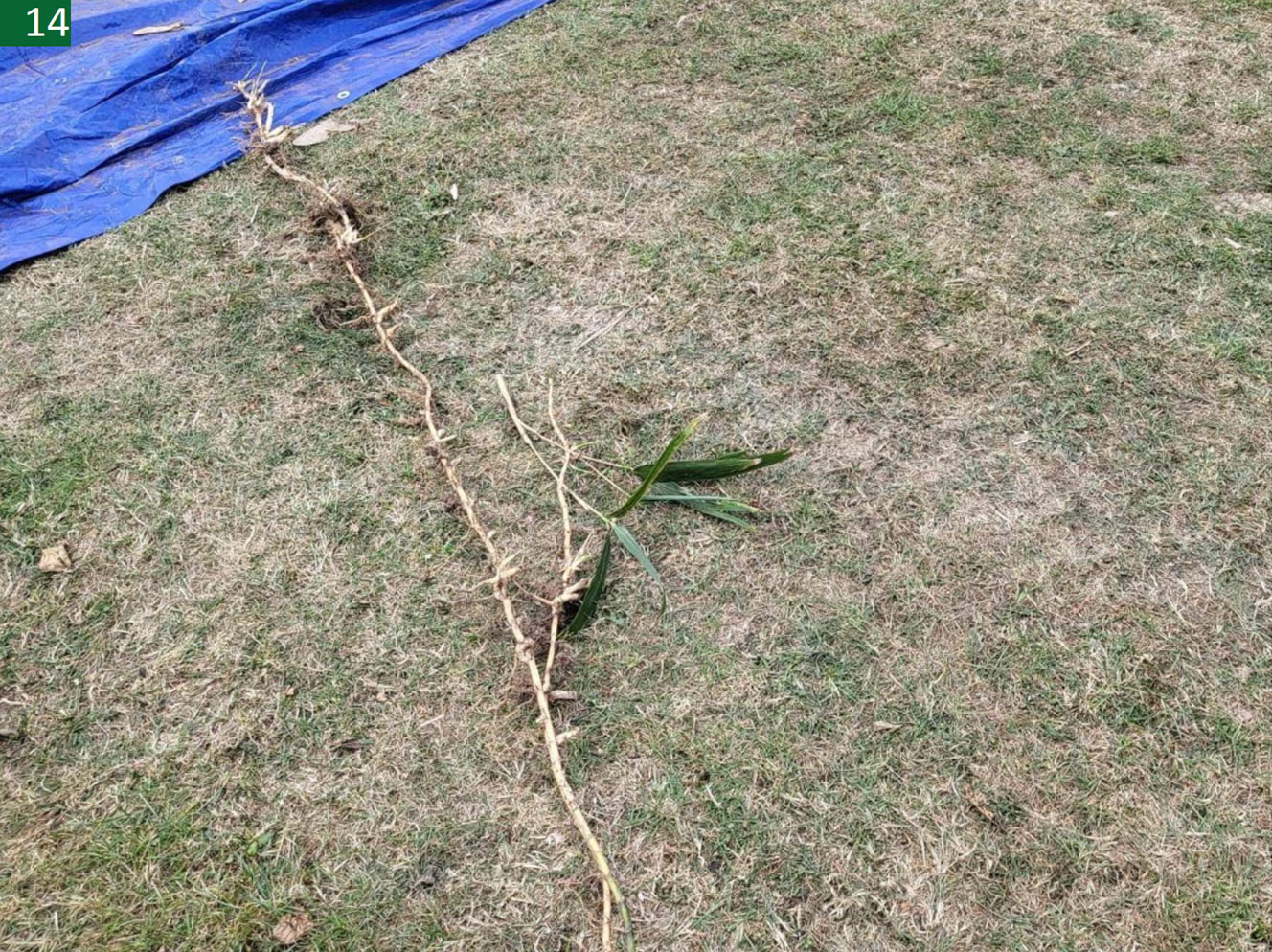Bamboo, whilst causing problems due to its invasiveness, can also cause problems with health and safety in some scenarios.
Southwest Knotweed, were asked to conduct a full removal of two stands of Bamboo (Arrow Bamboo) at a school in Cornwall, due to the sharp culms which could cause potential injury to children utilising the recreational space.
The images below, images 1-3, depict the large stand of Bamboo requiring excavation and removal.
This bamboo forms dense clumps and sends out runners to create new clumps.
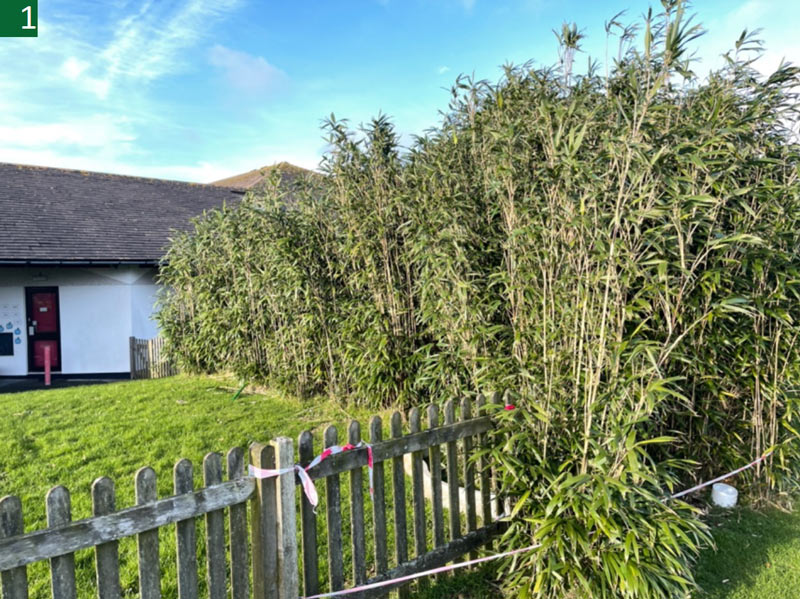
IMAGE 1 – Bamboo Stand pre-excavation
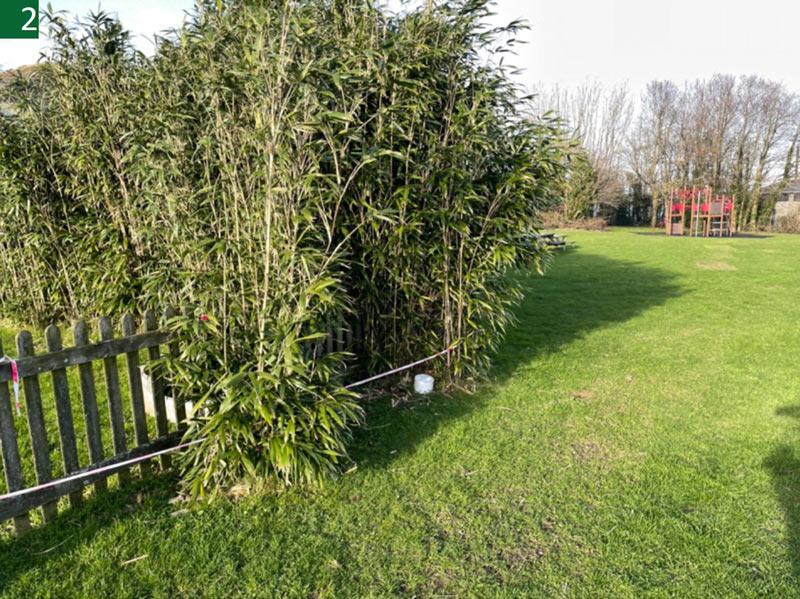
IMAGE 2 – Bamboo Stand pre-excavation
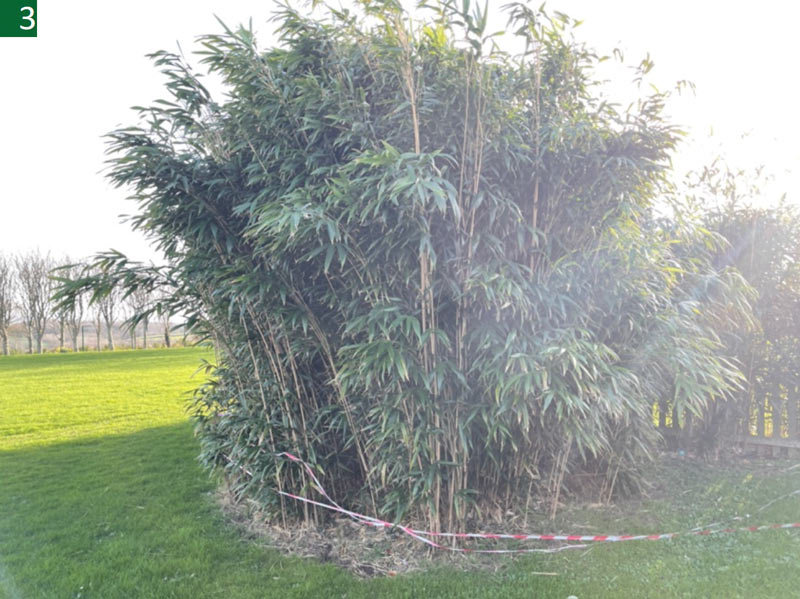
IMAGE 3 – Bamboo Stand pre-excavation
